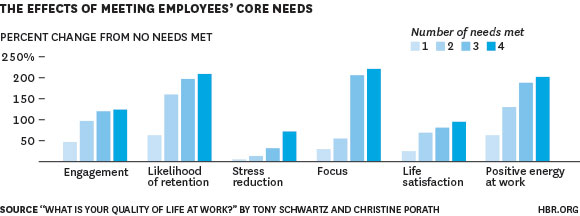
In our last post, we explored tips on building better relationships from couples guru John Gottman, PhD. We will continue this theme by drawing lessons on better communication from the #1 bestseller on marriage and adult relationships.
And while this may seem like a stretch for a business coach and consultant to be delving into, it’s not. When I coach, I coach the whole person. How you show up at work is affected by what’s happening in your personal life and vice versa. Please read on and see how this information can make your life better and more fulfilling in all aspects.
Over two decades after its original publication, Dr. Gary Chapman’s The 5 Love Languages: The Secret to Love That Lasts not only tops the marriage and relationships category, but it is also the #1 bestseller in both Relationships and Religious Studies—and it currently ranks #45 of all Amazon book sales (see Top 100 Books).
Clearly, Chapman is onto something fundamental, even life-transforming. So what’s the big secret? It’s simpler than you’d think. Practicing it is another story.
In-Love Phenomenon
Two years. That’s the average lifespan of the in-love phenomenon according to research conducted by psychologist Dr. Dorothy Tennov.
After the biological buzz fades, we need to make ongoing efforts to achieve a sustainable, mature love that is capable of surviving the 69% of unresolvable marital conflicts; the accumulation of irritations we may have once considered adorable quirks; the vicissitudes of time; and the daily stresses that life, work and family place on the relationship.
Love Tank
Gottman’s principles of positive and negative sentiment override can be mapped to Chapman’s metaphor of the love tank. When your love tank is full, you are more forgiving of your partner’s foibles because your emotional needs are being fulfilled (positive sentiment override). As poor communication erodes the relationship (negative sentiment override), the gas in your love tank dwindles, eventually reaching Empty.
How does a couple maintain a full love tank—or replenish an empty tank? By understanding and practicing each other’s primary love language, Chapman contends.
The 5 Love Languages
Each of us feels loved in different ways, and Chapman categorizes those ways as 1) words of affirmation, 2) quality time, 3) gifts, 4) acts of service and 5) touch.
Words of Affirmation
People for whom words of affirmation is their primary love language perceive compliments as expressions of love. This is not about flattery, generic praise, or simple thank-you’s—although expressing gratitude is always important. This is about specific praise of specific features and behaviors.
Contrast a generic response like “Nice” with a particular comment like, “I really respect how sensitively you handled that situation—you diffused the tension with humor and grace.” What the second phrasing tells the recipient is that you not only affirm and approve of her behavior but also that you noticed it. It is a way of letting her know she is not alone and that her efforts are appreciated.
Sincere, kind, and encouraging words do wonders to fill the love tank of a words-of-affirmation person. At the same time, negative and hurtful words can have a deeply damaging effect.
If the person you are trying to communicate with falls into this category, always remember, words are important.
Quality Time
Workaholics may think they are expressing their love by working hard to provide for their families, but what they often fail to realize is their partners would rather have fewer amenities in exchange for more quality time with their loved one.
Although watching favorite shows and movies together is enjoyable, this is not what Chapman means by quality time. You may both be in the same room, but you are focused on the television—not each other.
Rather, by quality time Chapman means one-on-one encounters where you have opportunities to look into each other’s eyes, discuss meaningful subjects and experience shared passions. These are the types of bonding experiences you practiced when first dating.
Cultivate your curiosity about your partner’s inner life, history and experiences and ask questions reflecting that interest. Find a shared hobby, project or even chore you can collaborate on. You may be surprised by how much closer you feel after performing a task together, whether it’s as simple as washing the dishes or as involved as rebuilding an engine.
Gifts
For some people, gifts are a tangible expression of love. No matter how small, a gift communicates to your partner that you took time out of your day to think of him.
The more thoughtful and specific the gift, the more meaningful it will be. Maybe your partner cut his finger on a faulty can-opener in the morning. Bringing home a new one that evening tells him you noticed and empathized with his frustration.
Pragmatic individuals often cannot understand why giving their partner a bouquet of flowers matters because all they see is ephemera that will end up in the garbage days later. What they don’t recognize is the feeling of appreciation that wells up in the recipient, who sees not the dying stems but the beauty that symbolizes their partner’s love.
Acts of Service
Living daily life can be exhausting, especially for those who feel they are shouldering the burden of household responsibilities. Housebound partners may develop resentment for the working partner, who feels they have fulfilled their responsibility by trekking to the office each day and doesn’t see why they should help around the house as well.
For those who speak the love language of service, even the smallest contribution can alleviate stress and convey love. Cleaning the litterbox, washing the car, emptying the dishwasher—just 10 minutes of your time can lift the spirits of your beloved. It’s tells the other person you know and appreciate the stresses they are under, and you are doing your part to help relieve those stresses.
Touch
This seems like an obvious expression of love, but there are people who haven’t grown up with touch as part of their emotional vocabulary, so they may not realize how meaningful it is to their partners.
A person whose primary love language is touch may feel slighted or neglected by someone who doesn’t think to express their love through handholding, hugs or back rubs. The withholding partner may be completely oblivious to this effect and thus may be perplexed when conflict, resentment, or passive-aggressive behavior emerges.
All of these are a sign of a depleted love tank, and a gentle touch is the first step toward replenishing it.
Appreciation in the Workplace
Although the love tank metaphor is geared toward romantic relationships, it can easily be mapped to parent-child, sibling, friend, coworker, and employer-employee relations. In the workplace environment, it would be called the “appreciation tank.”
Indeed, Chapman has written a book specifically applying the above principles to that context: The 5 Languages of Appreciation in the Workplace: Empowering Organizations by Encouraging People.
We will explore this book in my next blog post. Chapman and coauthor Paul E. White show how coworkers and managers can use the appropriate language to express their appreciation, letting colleagues and employees know they are valued.
As we have repeatedly explored on this blog, feelings of being valued and appreciated are crucial to employee happiness—and ultimately productivity, performance and loyalty.
I encourage you to begin practicing languages of love and appreciation in all of your relationships. When you match the right behavior to the recipient’s language, she will not only feel valued, but you will experience the reciprocal effects of kindness and gratitude.
What is your primary love language? You can take the tests for Love, Apology, and Appreciation at the 5 Love Languages website. Have fun!

 1) Renewal (physical). Employees are encouraged to take breaks to stretch, exercise, get fresh air or even power-nap. They return feeling rejuvenated and energized, ready to barrel through the next big task.
1) Renewal (physical). Employees are encouraged to take breaks to stretch, exercise, get fresh air or even power-nap. They return feeling rejuvenated and energized, ready to barrel through the next big task.













